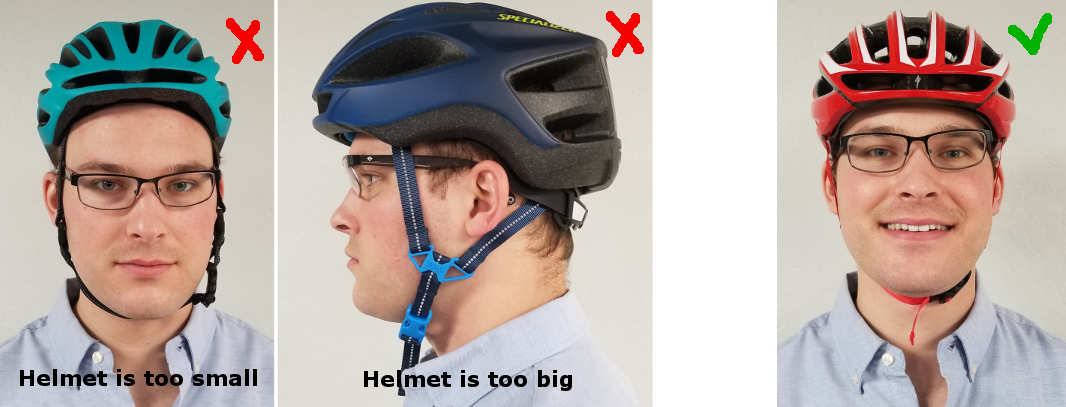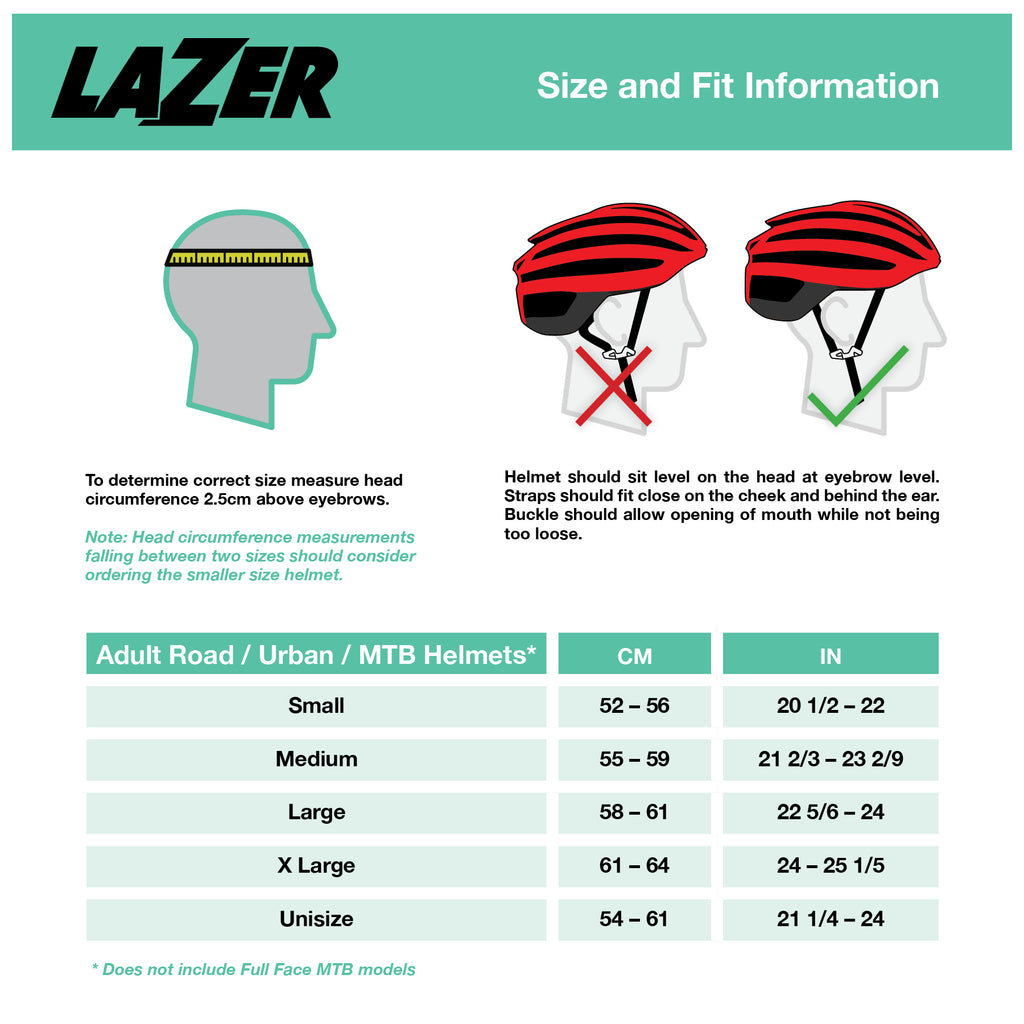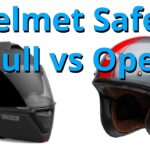To choose the right size helmet, measure your head circumference and try on helmets within that size range. Ensure the helmet fits snugly without causing discomfort.
Choosing the right helmet size is crucial for safety and comfort. A well-fitting helmet protects your head during impacts. Measure your head using a flexible tape measure, wrapping it around the largest part of your head, typically just above the eyebrows and ears.
Check the helmet size chart provided by the manufacturer. Try on helmets within your size range, ensuring they fit snugly without being too tight. The helmet should sit level on your head, with the front edge one inch above your eyebrows. Fasten the chin strap and shake your head to test the fit. A proper fit ensures maximum protection.
Importance Of Helmet Fit
Choosing the right size helmet is crucial for rider safety. A helmet that fits well protects your head in case of an accident. It also ensures comfort during rides. The right fit balances safety and comfort, making your rides more enjoyable.
Safety Considerations
A well-fitting helmet is essential for optimal protection. A loose helmet can shift during impact, reducing its effectiveness. Ensure the helmet fits snugly but not too tight. Measure your head’s circumference with a measuring tape. Match your measurement with the helmet sizing chart provided by the manufacturer.
Here’s a simple table to help you understand the measurements:
| Head Circumference (cm) | Helmet Size |
|---|---|
| 50-54 | Small |
| 55-59 | Medium |
| 60-64 | Large |
Comfort Factors
Comfort is as important as safety. A comfortable helmet encourages you to wear it consistently. Look for helmets with adjustable straps and padding. These features allow for a personalized fit. Ventilation is another key factor. Good ventilation keeps your head cool during long rides.
Consider these points for a comfortable fit:
- Adjustable straps
- Inner padding
- Ventilation holes
Remember, both safety and comfort are vital in choosing the right helmet size. A helmet should fit snugly, provide good ventilation, and have adjustable features for the best experience.

Credit: smf.org
Measuring Your Head
Choosing the right helmet size is crucial for safety and comfort. The first step is to measure your head accurately. This guide will help you measure your head correctly.
Tools Needed
- Flexible Measuring Tape
- Mirror
- Pen and Paper
Step-by-step Guide
- Prepare Your Tools: Gather a flexible measuring tape, mirror, pen, and paper.
- Position the Tape: Stand in front of a mirror. Wrap the tape around your head. Place it above your eyebrows and ears.
- Check the Fit: Ensure the tape is snug but not tight. It should sit comfortably.
- Read the Measurement: Look in the mirror. Note the measurement where the tape overlaps.
- Record the Measurement: Write down the measurement. Use this number to find your helmet size.
Use the table below to match your head measurement with the correct helmet size:
| Head Measurement (cm) | Helmet Size |
|---|---|
| 50 – 52 cm | Small |
| 53 – 55 cm | Medium |
| 56 – 58 cm | Large |
| 59 – 61 cm | X-Large |
Make sure the helmet fits snugly without being too tight. A proper fit enhances safety and comfort.
Understanding Helmet Sizes
Choosing the right helmet size is crucial for your safety. A helmet that fits well provides better protection. It also ensures comfort during long rides. This guide will help you understand helmet sizes better.
Size Charts
Helmet sizes are often determined by head circumference. It’s essential to measure your head accurately. Use a flexible tape measure. Wrap it around the widest part of your head.
Here’s a simple size chart to help you:
| Head Circumference (in cm) | Helmet Size |
|---|---|
| 51-52 | XS |
| 53-54 | S |
| 55-56 | M |
| 57-58 | L |
| 59-60 | XL |
| 61-62 | XXL |
Brand Variations
Different brands might have slight variations in sizing. Always check the size guide provided by the manufacturer. Some brands run smaller or larger than others.
Here are a few tips to consider:
- Read customer reviews for insights on fit.
- Try on multiple helmets if possible.
- Consult the brand’s customer service for advice.
Remember, a well-fitting helmet is key to riding safely. Make sure to take your time and choose the right size.
Types Of Helmets
Choosing the right size helmet is crucial for safety. Different types of helmets cater to various activities. It’s important to select the correct type based on your needs. Below, we explore three main types: road helmets, mountain helmets, and commuter helmets.
Road Helmets
Road helmets are designed for speed and ventilation. They are lightweight and have an aerodynamic shape. These helmets often come with more vents to keep you cool. Road helmets usually lack visors to reduce weight and improve aerodynamics.
| Feature | Description |
|---|---|
| Weight | Lightweight |
| Shape | Aerodynamic |
| Ventilation | High |
| Visor | None |
Mountain Helmets
Mountain helmets are built for rugged terrain. They offer more protection than road helmets. These helmets often come with visors to shield your eyes from the sun and debris. Mountain helmets provide extra coverage at the back of the head.
- Extra protection
- Includes visors
- More coverage at the back
Commuter Helmets
Commuter helmets are designed for daily travel. They balance safety and comfort. These helmets often include features like built-in lights and reflective elements. Commuter helmets usually have fewer vents but are more versatile.
- Balance of safety and comfort
- Built-in lights
- Reflective elements
- Fewer vents
Testing Helmet Fit
Ensure a secure fit by measuring your head’s circumference and checking the helmet size chart. Adjust straps and padding for comfort and stability.
Initial Fit
Finding the right helmet size is crucial for safety. Ensure the helmet sits snugly on your head. Should sit level and cover your forehead.Adjustments
Ensure the helmet straps form a V under your ears. Adjust the sliders for a comfortable fit. Check for any pressure points or gaps.Retention Systems
Inspect the chinstrap for tightness. Ensure it’s secure but not uncomfortable. Perform a shake test to confirm fit. For a quick reference, here’s a table summarizing helmet fit:| Aspect | Correct Fit |
|---|---|
| Position | Level and covering forehead |
| Straps | Form a V under ears |
| Chinstrap | Secure but not tight |

Credit: bikepretty.com
Common Fit Issues
Choosing the right helmet size ensures safety and comfort. Common fit issues can affect both. Let’s explore these issues to find the perfect helmet for you.
Pressure Points
Pressure points can cause discomfort and pain. They occur when the helmet is too tight in certain areas. This can lead to headaches and red marks on the skin.
To avoid pressure points, ensure the helmet distributes pressure evenly. Check for snug, not tight, fitting. The helmet should rest comfortably on your head.
Movement And Stability
If the helmet moves too much, it is too loose. A loose helmet can shift during a ride, reducing protection. Ensure the helmet stays in place when you move your head.
- Shake your head side to side.
- Look up and down.
- Check if the helmet shifts.
If it does, tighten the straps or choose a smaller size. A good fit means the helmet stays stable without being too tight.
| Issue | Solution |
|---|---|
| Pressure Points | Ensure even pressure distribution |
| Helmet Movement | Adjust straps or choose a smaller size |
Replacing Your Helmet
Helmets are crucial for safety. Over time, they need replacement. Knowing when to replace your helmet ensures maximum protection. This section guides you through the process.
When To Replace
Helmets don’t last forever. They should be replaced regularly. Below are instances when you should consider a new helmet:
- After a crash or impact
- Every 5 years, even without a crash
- If any part is damaged
Signs Of Wear And Tear
Identifying wear and tear is essential. Here are common signs:
| Sign | Description |
|---|---|
| Cracks | Visible cracks on the shell or foam |
| Loose Padding | Padding inside the helmet becomes loose |
| Worn Straps | Straps become frayed or weakened |
| Fading Colors | Colors fade due to UV exposure |
Regular checks ensure your helmet is in good condition. Replace it when you see these signs.

Credit: lazersport.us
Expert Recommendations
Choosing the right helmet size can be challenging. Expert recommendations simplify this process, ensuring safety and comfort. Let’s dive into expert insights on selecting the perfect helmet size.
Top Brands
Experts often recommend helmets from top brands. These brands are known for their quality and reliability. Here are some top helmet brands:
- Bell Helmets: Known for innovative designs and safety features.
- Giro: Popular for lightweight and comfortable helmets.
- Schuberth: Offers advanced technology and superior protection.
These brands are trusted by professionals. They offer various sizes to fit different head shapes.
User Reviews
User reviews provide valuable insights into helmet fit and comfort. Reading reviews helps you understand real-world experiences. Here’s a summary of what users say:
| Brand | Comfort | Fit | Durability |
|---|---|---|---|
| Bell Helmets | ★★★★★ | ★★★★☆ | ★★★★★ |
| Giro | ★★★★☆ | ★★★★★ | ★★★★☆ |
| Schuberth | ★★★★★ | ★★★★★ | ★★★★★ |
Most users highlight comfort and fit. These factors are crucial for long-term helmet use. Durability is also a common praise among top brands.
Frequently Asked Questions
How Do I Measure My Head For A Helmet?
To measure your head, use a soft tape measure. Wrap it around your head, just above your eyebrows. Ensure the tape is level and snug.
What If My Helmet Size Is Between Two Sizes?
If you are between sizes, choose the smaller size. Helmets should fit snugly but not uncomfortably tight. Try both sizes if possible.
How Should A Helmet Feel When Worn?
A proper helmet should feel snug all around. It shouldn’t have pressure points or move when you shake your head.
Can I Use A Bicycle Helmet For Motorcycling?
No, you should not use a bicycle helmet for motorcycling. Motorcycle helmets are specifically designed for higher impacts and speeds.
Conclusion
Choosing the right helmet size is crucial for safety and comfort. Measure your head accurately and consult size charts. Test the fit before buying to ensure it’s snug yet comfortable. A well-fitted helmet can protect you better. Prioritize your safety by selecting the correct helmet size today.


